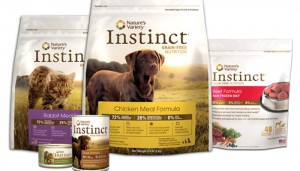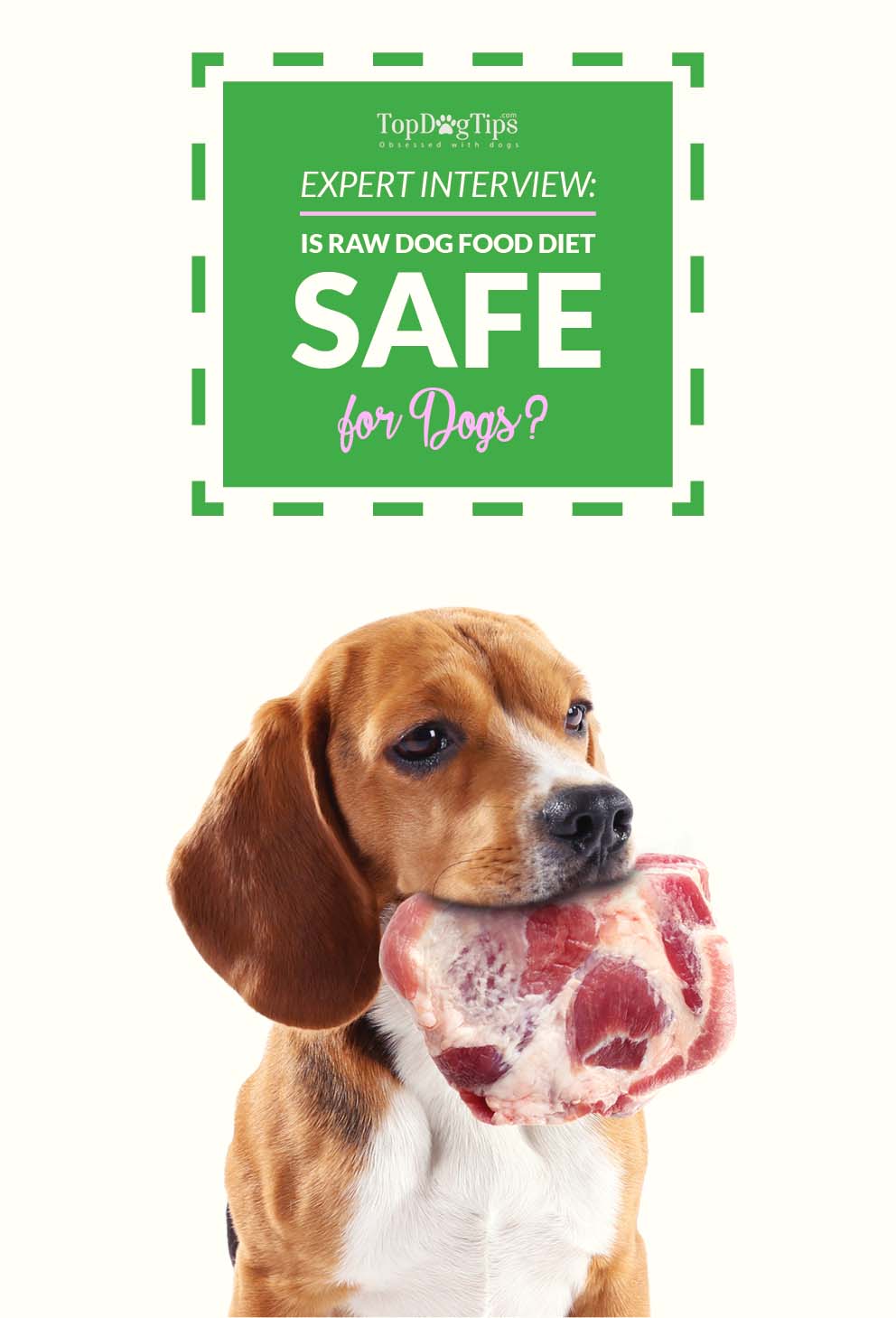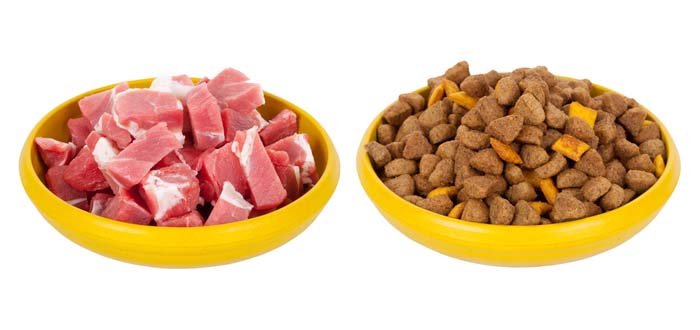The raw food diet for dogs is controversial, but its popularity is growing among pet owners striving to feed their dog a healthy and safe food. The diet requires you to feed your pet raw meat, vegetables, fruits and bones for dogs. Most traditional veterinarians are not on board with the diet, as the risks have been studied and documented in many professional journals.
In 1993, a veterinarian in Austria, Ian Billinghurst, proposed a new canine feeding method that he called BARF Diet – an acronym which stands for Bones and Raw Food or Biologically Appropriate Raw Food. He based the diet on the foods that wild canines ate before they became domesticated.
Some critics of the diet cite the health threat of bacteria in raw meats as their reason for not backing the diet. Others believe that whole bones can break teeth, cause internal organ damage and increase the potential for choking. Some experts feel that the unbalanced diet may be detrimental to a dog's health if fed for an extended period of time.
Breakdown of Raw Dog Food Diet
 The benefits of the raw food diet for dogs have slowly been coming to light with recent research, but the diet is so new that there has not been many long-term studies performed on its health effects in canines.
The benefits of the raw food diet for dogs have slowly been coming to light with recent research, but the diet is so new that there has not been many long-term studies performed on its health effects in canines.
However, holistic veterinarians, dog owners and other experts in the field of canine health and nutrition say the benefits of the raw canine diet include:
- Healthier skin
- Shinier coat
- Higher energy levels
- Smaller and less frequent stools
- Cleaner teeth
More on this you can read in our Raw Diet Guide.
And because the raw dog food diet is so rich in nutrients you won't have to feed as great a quantity. There are some commercial pet food manufacturers who believe in the research being done and feel that the raw food diet may be the wave of the future for canines.
They are beginning to create commercial raw foods that are much more convenient for pet owners than shopping for and preparing their own raw dog food at home.
This week I had the opportunity to chat with Shelby Wisniewski, Brand Activation Manager for Nature's Variety Instinct, a pet food manufacturing company specializing in the raw food diet for dogs.
They've ranked well among our top dog food brands listing, and they now popular Raw Boost Kibble formula offers complete and balanced nutrition for dogs of all ages, and they offer specialized blends for toy and small breeds.
I spoke with Shelby about the company and the raw food diet for dogs. I wanted to know the differences between raw food and traditional dry kibble and the important things that pet owners should know about the diet.
RELATED: 4 Different Types of Dog Food and Which One Your Dog Needs?
Interview: Is the Raw Food Diet for Dogs a Good Choice for My Pet?

As I mentioned, the raw food diet for dogs is gaining in popularity. Shelby told me that pet parents are more aware than ever before about what they’re feeding their dogs. They’re paying attention to what’s in their pet’s food and they want to avoid highly processed foods that contain dog food ingredients they don’t recognize or preservatives and additives they don’t feel good about.
She also said that they are recognizing that they can find better nutrition in foods that are made from pure, real ingredients. The raw food diet gives them the ability to feed their pets food that’s as close to its natural state as possible.
That's what the raw dog food diet is all about!
Nature's Variety Instinct got its start with raw diets and a simple belief that what we feed our pets should match their original diets. Shelby says the company believes that we should follow nature’s lead and stick with the pure, real nutrition of raw food. The company's purpose is “empowering people to transform the lives of pets.”

Instinct Raw provides an all-natural, complete and balanced diet.
The dog food is made with pure animal protein and real, whole food ingredients, which allow for maximum nutrient absorption and improved digestibility.
All of the vitamins and enzymes in Instinct Raw are naturally occurring, not derived from artificial ingredients or dog supplements that are rarely used anyway.
RELATED: What's Best Dog Food Brand?
The Difference Between Raw Dog Food vs Traditional Kibble
Of course, this was my primary question. Why spend more money on raw food? What are the major benefits compared to traditional dry kibble, which is also the most commonly fed diet by dog owners.
Shelby explained to me that the primary difference between dry kibble and raw pet food is that dry kibble is cooked and raw pet food is not. This means that dry kibble is more processed than raw pet food, because the ingredients are not kept in their most natural state.
Nature's Variety Instinct believes that it’s possible to make dry kibble that incorporates the power of raw. That's why they introduced a grain-free, high-protein kibble that’s coated in freeze dried raw food known simply as Instinct kibble.
They also offer Instinct Raw Boost kibble, which is a grain-free, high-protein kibble that includes freeze dried raw pieces. Today they have a full portfolio of kibble, all of which is built on the principles of raw nutrition.
I recommend reading these two articles:
- 8 Reasons to Feed Your Dog Raw Food Diet
- 7 Reasons NOT to Feed Your Dog Raw Dog Food (Based on Facts)
When discussing what pet owners should be looking for in the dog food that they choose, Shelby says that the first ingredient – which is listed as such because it’s the most prevalent in the food – should be a named meat, poultry or fish protein, such as chicken, venison, duck or salmon.
Other ingredients to look for are real, whole ingredients like fruits and vegetables, such as broccoli, carrots, blueberries or cranberries. It's best to speak with your veterinarian about your dog's specific needs and what nutritional qualities you need to look for in his dog food.
RELATED: Let’s Talk about the Raw Dog Food Diet
Common Misconceptions About the Raw Food Diet for Dogs
During my discussion with Shelby, I learned that the two most common misconceptions about the raw food diet for dogs are convenience and safety. Because feeding raw pet food can be different from what most pet parents are accustomed to, there’s a bit of hesitation when it comes to how feeding raw changes their daily habits.
That's why they offer Instinct Raw frozen dog food as an option. It is offered in various forms, including pre-portioned medallions and patties and ready-to-serve bites. They also offer freeze-dried raw and other options that make feeding raw dog food as easy as feeding kibble.
There are many other frozen dog food products available on the market as well, but you need to be careful which brand you choose. Not every manufacturer holds itself to the high standards that you see with Instinct pet foods.
Do some research on the dog food that you're considering before making a purchase.
Instinct incorporates intensive procedures for quality and safety in their manufacturing process. They follow the same industry best practices as are used in human food, including High Pressure Processing (HPP) and a natural, USDA-recognized anti-pathogen treatment.
It's just as important to know where your dog food comes from as it is to know what the ingredients are.
Their ingredients are sourced from USDA inspected facilities and facilities regulated by the FDA. The company also owns its manufacturing facility, which adheres to state, federal and EU regulations and standards and is regularly monitored by third-party auditors.
RELATED: Are Raw Bones Good for Dogs?
Switching to Raw Dog Food Diet
You cannot simply decide to switch your dog to a new brand of food or a new diet without making a plan for a gradual changeover. If you just switch him to a new food instantly, it will more than likely make him very sick.
Shelby's advice when feeding any new food to your dog for the first time, is that it’s best to transition slowly. Pet parents should mix increasing amounts of their dog’s new food with decreasing amounts of the previous food over a period that can be as short as two to three days or as long as three weeks.
During this time, pet parents should monitor the frequency and consistency of their dog’s stool and adjust the transition accordingly.
Instinct Pet Food provides an interactive app on their website to help pet parents determine proper products, feeding amounts and schedules.
When we feed our pets their original diet, we unlock their potential to truly thrive. If you decide to switch your dog to a raw diet, you are likely to see benefits including:
- Leaner, stronger muscles
- Natural oils and omega fatty acids provide healthy skin and coat
- More appropriate for dogs with food allergies and sensitivities
- Chewing raw meat and bones promotes healthy teeth and gums
- Raw, natural whole food ingredients promote maximum digestibility
I also asked Shelby is the raw diet would be appropriate for all dogs. This was her response:
“There is no one perfect diet for 100 percent of dogs, but a raw diet is appropriate for virtually all dogs. Dogs of all sizes, weights, breeds, and ages can benefit from the pure, real nutrition of raw.” – Shelby Wisniewski
If you're considering switching your dog to a raw food diet, it is best that you speak with your veterinarian about it. They know your dog's health history and what his nutritional needs are. They'll be able to answer any of your questions about the diet and help you select the best commercial food for your dog.
I'd like to take this time to thank Shleby Wisniewski for speaking with me and for helping me educate our readers about the benefits of the raw food diet for dogs. Make sure to check out Nature's Variety Instinct's website for more information about their dog food products and the benefits of feeding your dog raw.
READ NEXT: Dog Food for Dogs with Diabetes: What You Need to Know















